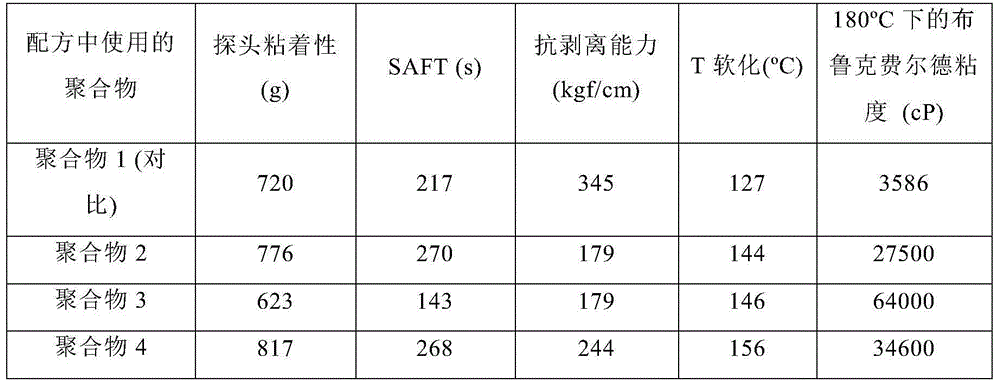Hydrogenated aromatic alkenyl and diene copolymers containing comonomers that have silyl hydride units and functionalized analogues thereof
A technology of silyl hydrides and alkenyl aromatics, applied in coatings, adhesives, etc., can solve problems such as fracture, low reaction temperature, and instability
- Summary
- Abstract
- Description
- Claims
- Application Information
AI Technical Summary
Problems solved by technology
Method used
Image
Examples
preparation example Construction
[0040] Conjugated dienes (or dienes) suitable for use in the preparation of the polymers of the present invention are known in the art and include, but are not limited to: 1,3-butadiene, isoprene, 2,3 -Dimethyl-1,3-butadiene, 1,3-pentadiene, 2-methyl-3-ethyl-1,3-butadiene, 2-methyl-3-ethyl-1 ,3-pentadiene, 1,3-hexadiene, 2-methyl-1,3-hexadiene, 1,3-heptadiene, 3-methyl-1,3-heptadiene, 1 ,3-octadiene, 3-butyl-1,3-octadiene, 3,4-dimethyl-1,3-hexadiene, 3-n-propyl-1,3-pentadiene, 4,5-diethyl-1,3-octadiene, 2,4-diethyl-1,3-butadiene, 2,3-di-n-propyl-1,3-butadiene, 2 - Methyl-3-isopropyl-1,3-butadiene and myrcene, and mixtures thereof.
[0041] In a preferred embodiment, at least one conjugated diene monomer is selected from butadiene (B) and / or isoprene (I).
[0042] The polymers of the present invention also include at least one monomer comprising at least one silyl hydride moiety (ie, Si-H bond). The use of this type of monomer in polymerization is to provide the polymer wit...
specific Embodiment
[0115] In the examples described below, all polymerizations and hydrogenations were carried out in an autoclave reactor with an internal capacity of 2 liters, with a system for temperature control, stirring, and a flow meter in the monomer addition line, and Nitrogen and hydrogen inlets, venting and sampling lines.
[0116] The obtained polymers were subjected to gel permeation chromatography and 1 H NMR technique in CDCl 3 Characterization was performed at 500mHz.
Embodiment 1
[0117] Example 1 4-dimethylsilylstyrene and block copolymers of styrene and butadiene with 4-dimethylsilylstyrene in the first block, (DMSiS / S)-b -BD-b-S
[0118] 1130 mL of cyclohexane together with 2.8 mL of tetrahydrofuran and 20.1 g of styrene and 1 mL of pure 4-dimethylsilylstyrene were introduced into the polymerization reactor. The initial reaction temperature was set at 60° C., and 2.1 mmol of n-butyl lithium in cyclohexane was added. The monomer mixture was reacted under these conditions for 5 minutes. Thereafter, 151 mL (1.75 mol) of 1,3-butadiene was added. The reaction of butadiene was polymerized for 25 minutes. Finally, 20.4 g of styrene were added to the cyclohexane solution. The reaction time of the final styrene block was 5 minutes and the right amount of di-tert-butylmethylphenol (BHT) was added to deactivate the living polymer chains as determined by on-line UV-Vis technique. A sample of the cyclohexane solution of the polymer was precipitated in hot wa...
PUM
| Property | Measurement | Unit |
|---|---|---|
| molecular weight | aaaaa | aaaaa |
Abstract
Description
Claims
Application Information
 Login to View More
Login to View More - Generate Ideas
- Intellectual Property
- Life Sciences
- Materials
- Tech Scout
- Unparalleled Data Quality
- Higher Quality Content
- 60% Fewer Hallucinations
Browse by: Latest US Patents, China's latest patents, Technical Efficacy Thesaurus, Application Domain, Technology Topic, Popular Technical Reports.
© 2025 PatSnap. All rights reserved.Legal|Privacy policy|Modern Slavery Act Transparency Statement|Sitemap|About US| Contact US: help@patsnap.com



